What is Espresso Coffee? (The Details and Origins of Espresso)
Wanna be bolder than a basic cup of joe? Espresso is just the thing! Tempting, robust flavor – you won’t be able to resist.
This article will explain all about espresso – from its origin to how it’s made.
First of all, what exactly is espresso, and how does it differ from your regular cup of joe?
Espresso is a method of preparing a concentrated form of coffee that involves forcing a small amount of nearly boiling water through finely-ground, roasted coffee beans. The result is a highly concentrated and intensely flavored coffee beverage, the shot of espresso.
Origins of Espresso
Espresso came into being in the late 19th and early 20th centuries, as a product of Italian inventiveness (combined with our ever-present need for caffeine). And, as a barista, I can’t help but feel a sense of gratitude towards our Italian friends for this marvelous creation.
You see, back then, people were on the hunt for a quicker way to prepare coffee. Traditional brewing methods were time-consuming, and the world was moving at a faster pace. That’s when Angelo Moriondo invented the first espresso machine in 1884. It didn’t have much finesse, and he only used it in his own establishments.
It was Luigi Bezzera who, in 1901, patented the first espresso machine. Talk about a game-changer! This contraption, named the “Tipo Gigante,” used steam pressure to force water through the ground coffee, producing a strong, concentrated shot in mere seconds. Presto, Espresso was born.
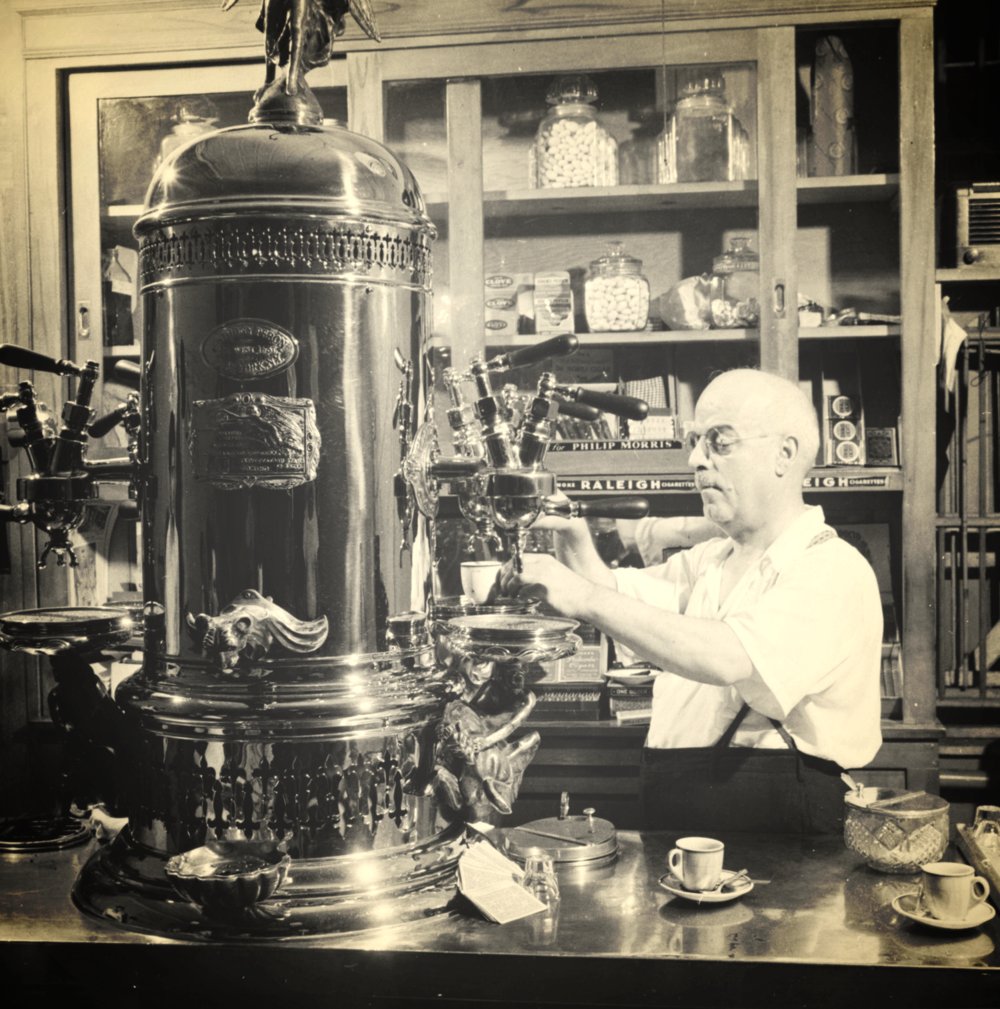
The espresso machine went through a series of iterations and improvements, and in 1938, Achille Gaggia introduced a revolutionary design that used a spring-powered piston to create higher pressure (leading to that luscious layer of crema). Mmm, delizioso!
Espresso became popular in Italian cafes. It has become a part of their culture. The name ‘espresso’ is actually from the Italian word “express,” meaning speedy. Today, espresso is loved around the globe. Baristas, roasters, and specialty coffee shops have formed a culture surrounding it.
How espresso is made
Espresso is made by using steam pressure to push water through ground coffee at high pressure (9 bars).
But as you can imagine, the process is more complicated. Making espresso is an art. You need precision, patience, and skill.
- Turn on the machine and wait till it reaches the right temp.
- Place a cup under the group head and run water. This preheats the group head (and the cup if needed).
- Grind high-quality coffee beans that were roasted no longer than 1 month ago. Measure the dose precisely (18-20 grams for a double shot).
- Tamp the ground coffee into a portafilter basket. This makes sure there are no air pockets and cracks that would lead to channeling and spoil the taste.
- Lock it into the machine.
- Engage the brew button or lever.
- In 25-35 seconds you get a shot of espresso with crema on top. Water is forced at high pressure (9-10 bars) through the coffee grounds to get the flavors and aromas.
Now it seems easy but dialing in a great espresso takes skill and patience.
Difference between espresso as a brewing method, espresso as a beverage, and espresso coffee beans
The word espresso is used interchangeably between a few things. Let’s go over the differences between what they mean.
- First off, espresso can be referred to as a brewing method. Hot water is forced through finely ground coffee at high pressure (usually around 9 bars), resulting in a concentrated, full-bodied coffee, extracting the best flavors and oils from the beans in a matter of seconds. When I’m working the espresso machine, I often think of it as a high-pressure coffee laboratory!
- Now, let’s talk about espresso as a beverage. This is also called shot of espresso, which refers to the actual beverage that you drink. An espresso shot typically consists of 25-30ml of liquid.
- Finally, onto espresso coffee beans. Although any type of bean can technically be used for making espresso, some beans are specifically roasted and blended for the espresso brewing process. Espresso beans are roasted darker than beans used for other brewing methods, which enhances their natural oils and creates a bolder, more intense flavor. Specialty coffee uses light roast beans though, so don’t think that only espresso roast beans can be used to make espresso. As a barista, I find it fascinating to experiment with different beans and blends to discover that perfect combination of flavors and aromas.
How to drink espresso
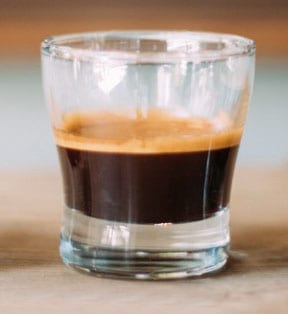
Click the link for a detailed article on how to drink and enjoy espresso, but I’ve summarized it for you below:
- First, use the right cup – a preheated demitasse, which holds 2-3 ounces of liquid and helps preserve the aroma.
- Then, swirl the cup and take a deep sniff of the aroma.
- Next, take a small sip and swirl it around in your mouth for a few seconds before swallowing.
True coffee lovers don’t add milk or sugar, as this can mask its unique taste profile.
The effect of coffee beans
While the traditional Italian espresso uses 7g of dark roasted coffee beans for a single shot and 14g for a doppio, the contemporary third-wave coffee movement uses much more (9g for a single and 18g for a double) light or medium roast beans.
The difference in taste is pronounced, which I’ll go into more detail below. Here are my picks for the best coffee beans to use for espresso.
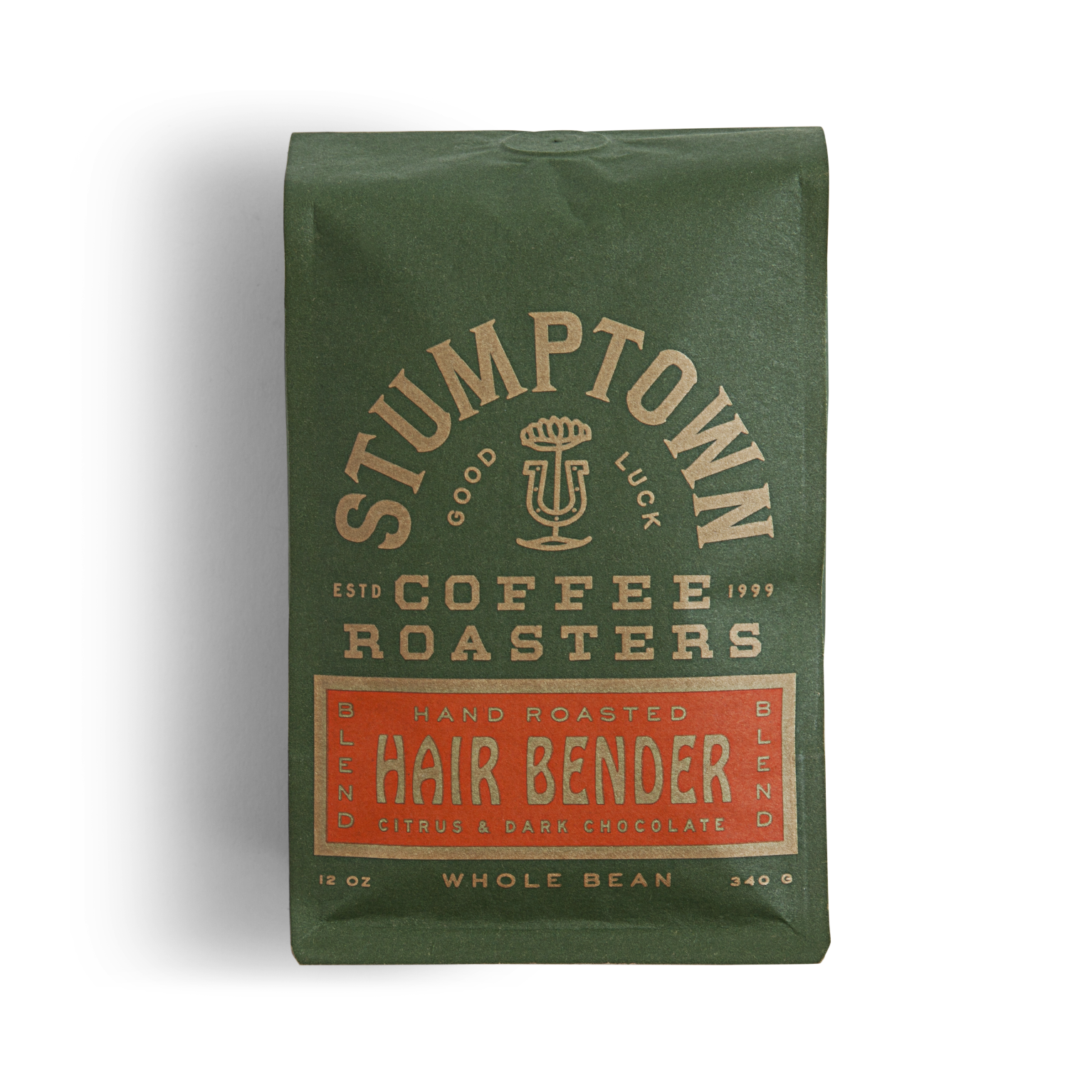
- Type: Arabica
- Origin: Latin America, Indonesia, Africa
- Taste: Sweet citrus, dark chocolate, raisin
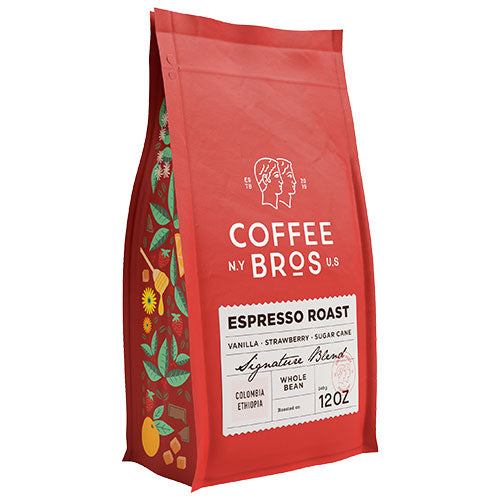
- Type: Arabica
- Origin: Ethiopia, Colombia
- Taste: Strawberry, sugar cane, vanilla
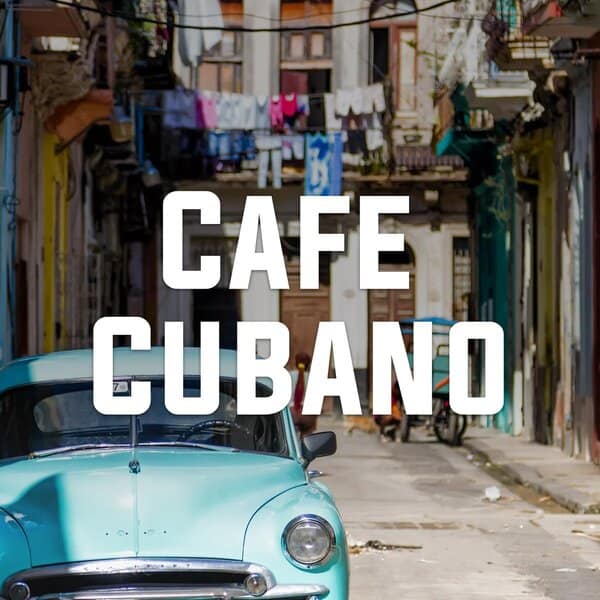
- Type: Arabica
- Origin: Brazil, Colombia, Guatemala
- Taste: Chocolate, caramel, nutty finish
What Espresso tastes like
Espresso is a strong, concentrated coffee with a special taste no other brewing method can reproduce. Its potent flavor comes from being brewed under high pressure (9 bars).
The roast level of the coffee bean you use gives distinct flavors:
- Dark roast: bold and intense, can be a bit bitter
- Medium roast: balanced between acidity, bitterness, and natural sweetness
- Light roast: is subtle, with hints of citrus, fruit, and floral notes.
When tasting espresso, look for its unique aromas and flavors, like nutty and fruity mixed with earthy, wood, and chocolate undertones. A well-made shot will have sweetness balanced by acidity. Go to any specialty coffee shop, and you can spark up interesting conversations with the local baristas on this.

A word on espresso crema
Espresso crema: it’s the foam on top of a well-brewed espresso shot. This layer is created by forcing hot water through finely-ground coffee at high pressure.
Crema is different from other types of foam. It’s made of CO2 gas bubbles, which inflate during the brewing process. Good crema is thick, golden brown, and even, which dissipates after a few minutes, not instantly.
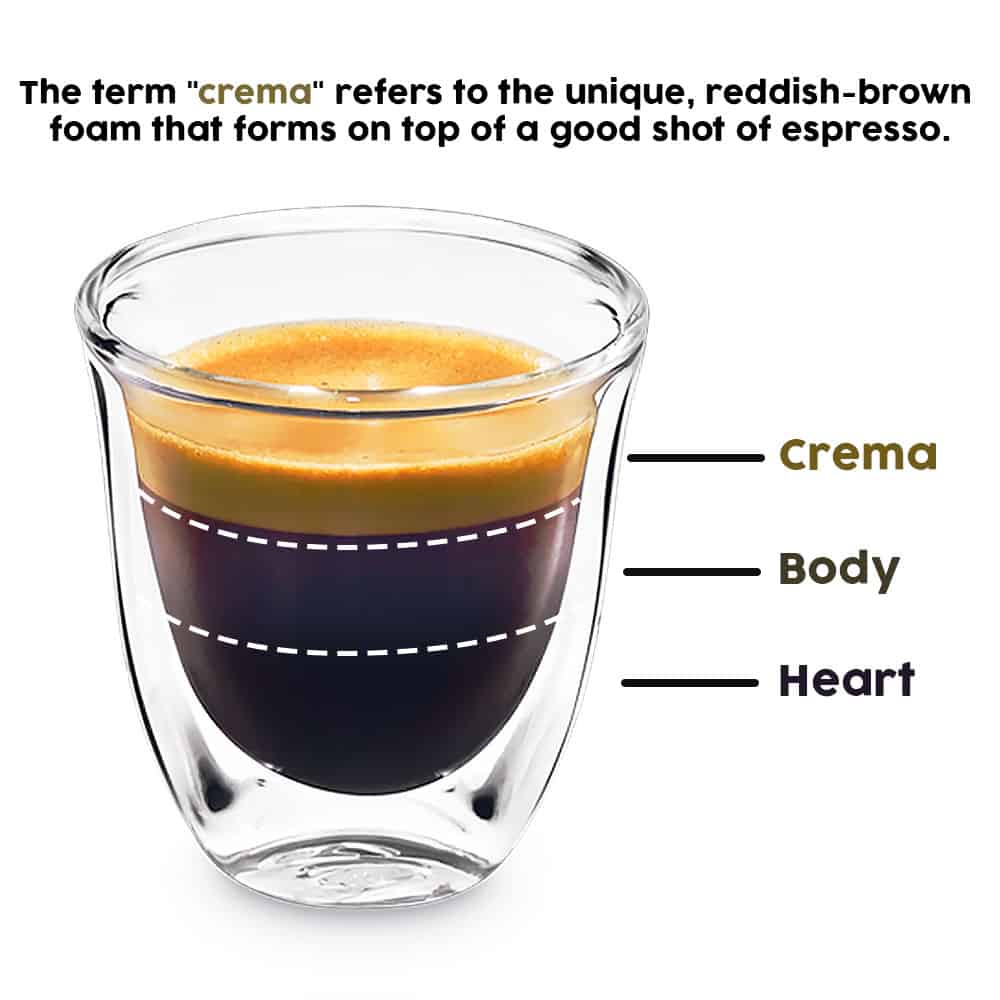
Arabica beans make less crema than Robusta, but Robusta doesn’t taste that good. The best coffee blends actually use mainly arabica, with less robusta beans blended in for that attractive crema.
Sometimes, crema doesn’t form. I have a detailed article on this, but the main reasons are:
- Stale or low-quality coffee beans,
- pre-ground coffee,
- incorrect water temperature or pressure,
- poorly maintained machine hardware
Espresso caffeine content
A shot of espresso has the same amount of caffeine as a cup of regular coffee, so don’t underestimate it based on size. Be careful not to drink too much – adults should stick to 400 milligrams of caffeine per day (4 8-ounce cups of coffee).
I once had a friend who tried an espresso shot for the first time. She thought it would give her an extra boost – but she had 4 shots in an hour and felt like her heart was about to jump out! So, be mindful of your caffeine intake.
If you looking for an espresso with lots of caffeine, go for a light roast. But if the taste is your main focus, you should probably opt for a medium or dark roast.
Should you add sugar & cream to espresso?
True espresso fans do not add anything to their coffee, as it would alter the original taste of the beans.
But this really is up to your personal preference. Some like their espresso strong & black, while others like to add condiments for flavor.
- If you like sweet coffee, add some sugar.
- If you enjoy creamy drinks like lattes or cappuccinos, cream or milk may be the way to go. The creaminess creates a velvety smooth drink for mellow tastes.
- Combine them if you like sweetness with creaminess, adding sugar & cream to espresso makes a balanced and flavorful drink.
- But, if you want to experience the bean’s taste without extra sweetness, don’t add anything.
If you’re not sure what to do, experiment with different ratios. A good starting point is one teaspoon of sugar and one tablespoon of cream per 2oz shot. Adjust as needed until it’s perfect.
Espresso is used for other drinks
Espresso is the main ingredient for many popular coffee + milk drinks.
- Cappuccino is a popular beverage made of espresso, steamed milk, and a layer of foamed milk. The creamy and frothy texture comes from the emulsification of milk.
- Latte is also popular; it’s made with steamed milk and a thin layer of microfoam over an espresso shot. This microfoam is what makes it different from a more frothy cappucino. Latte art techniques can add another level of visual appeal.
- Americano is made by adding hot water to espresso shots. This reduces its strength but keeps the flavor.
- Other popular coffee drinks based on espresso include cortado, macchiato, and mocha.
And the list doesn’t stop there. Espresso is used even for alcoholic cocktails, like the renowned Espresso Martini.
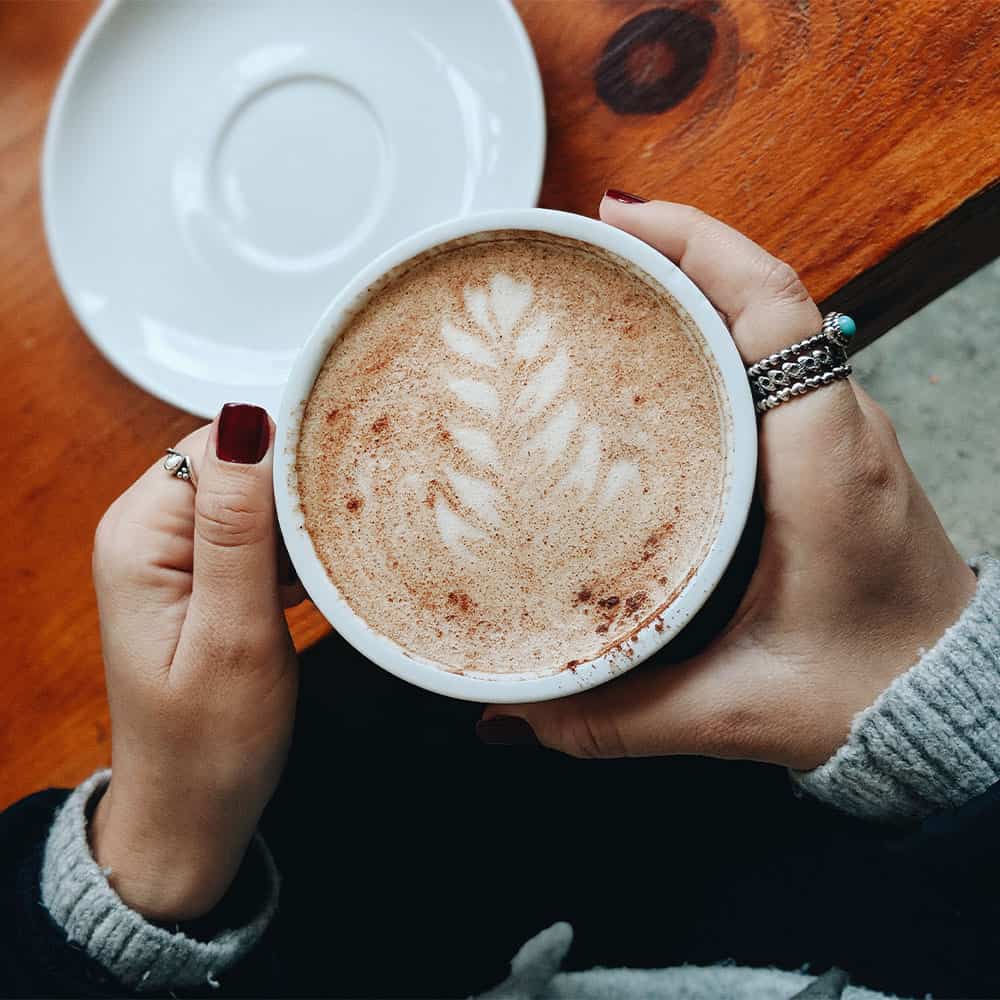
Quick questions and answers
You probably still have some questions in your head, here are the answers to a few of them.

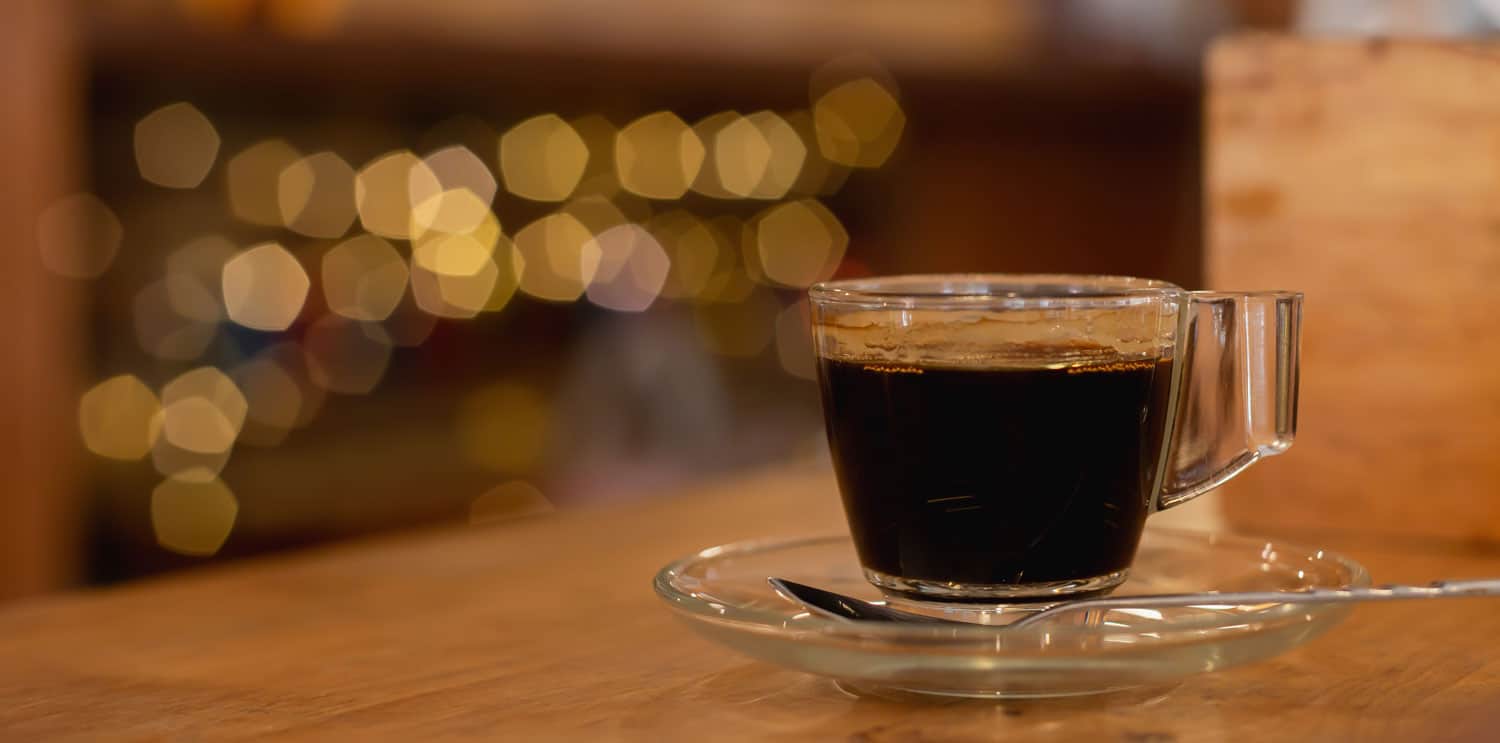

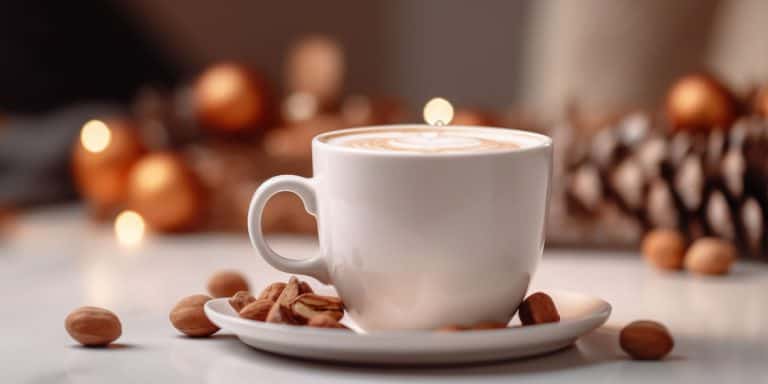
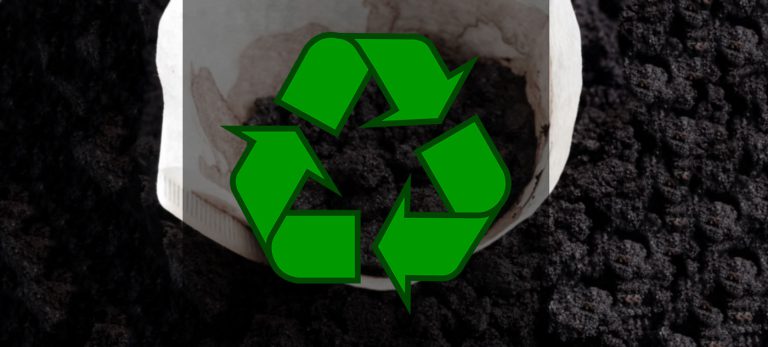
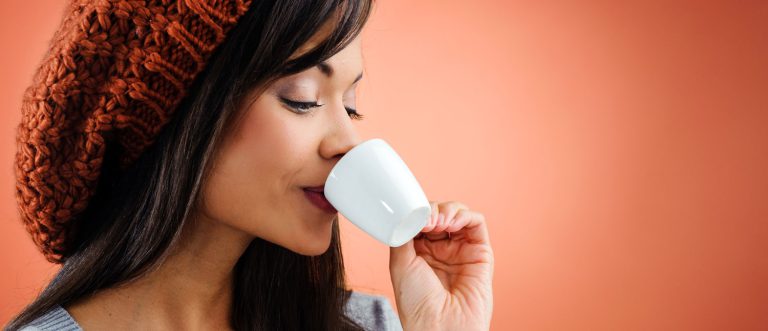
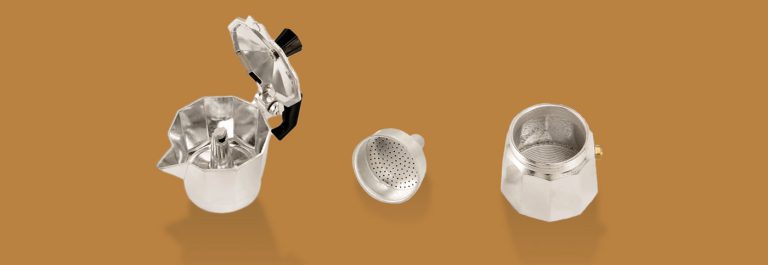
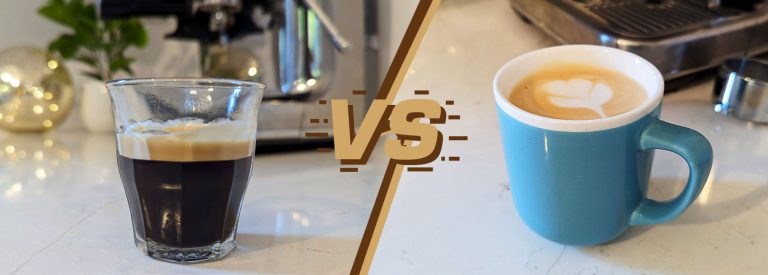
Okay, confession time: I’ve always been more of a chai guy. But after reading this, I’m thinking of switching teams.
Been working at a coffee shop downtown in LA for a few years now, and I’ve got to say, this article nails it. I had a debate with a coworker about crema just last week, and this would’ve settled it. Definitely sharing this at work tomorrow 🙂
Wow, I never knew there was so much to learn about espresso. I’ve just started exploring coffee beyond my usual morning brew, and this article was super helpful. The history part? Mind-blown. Cheers, Tom!